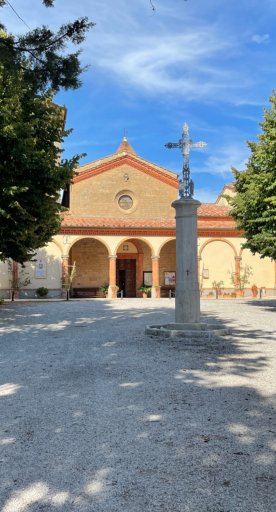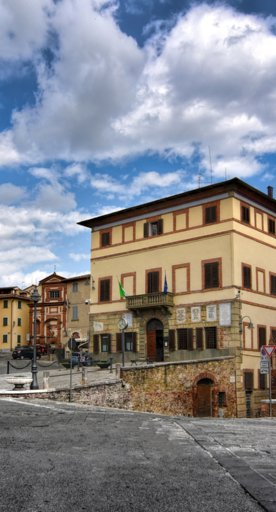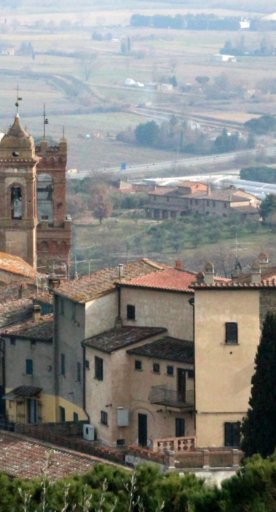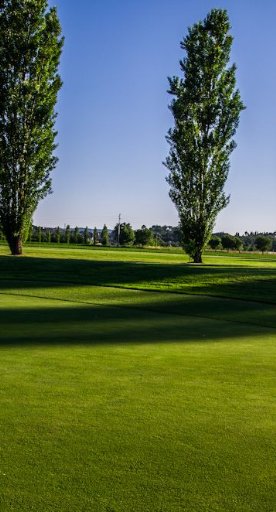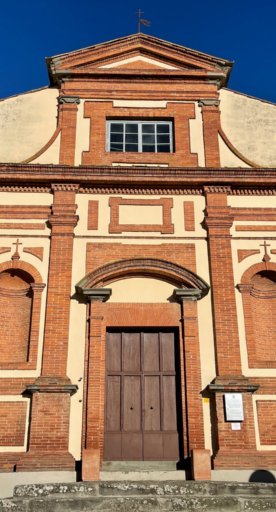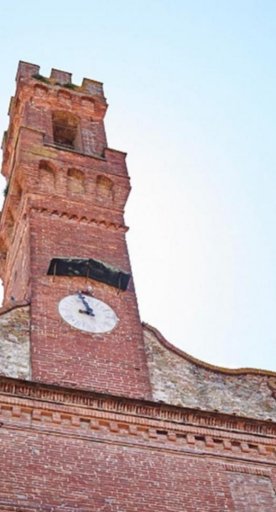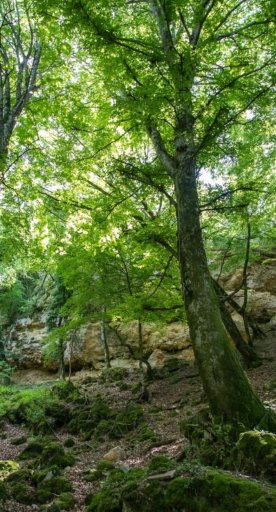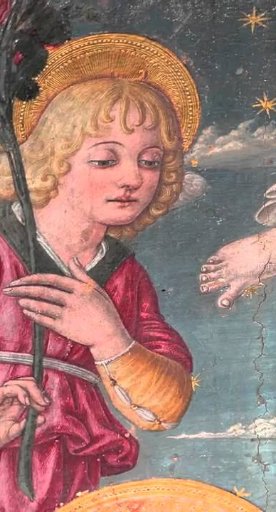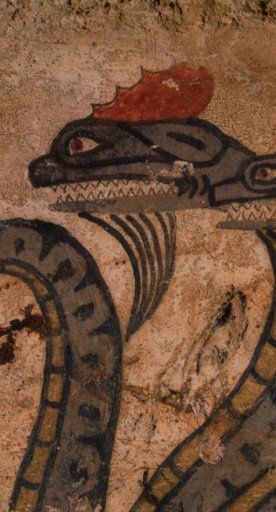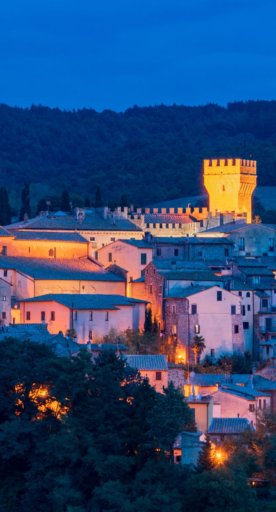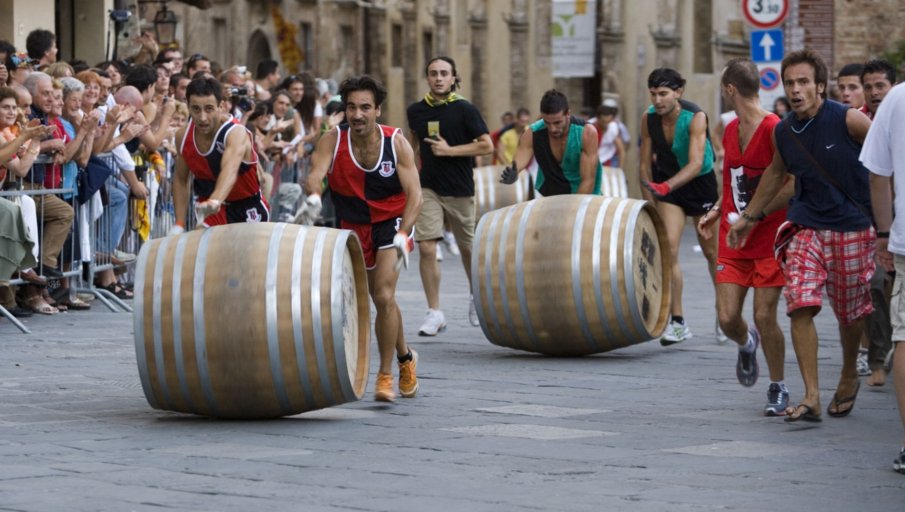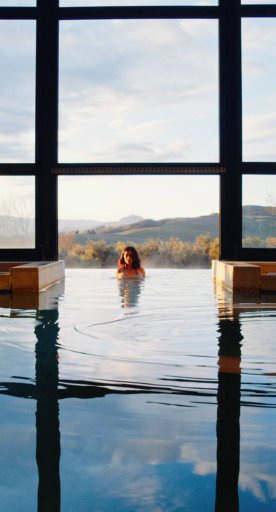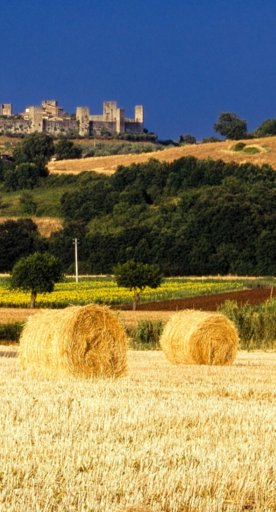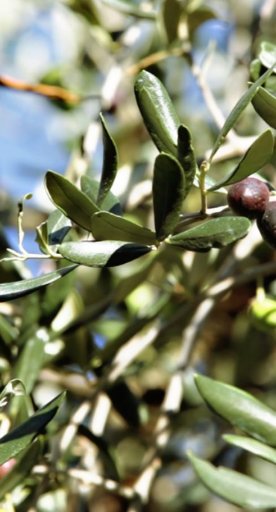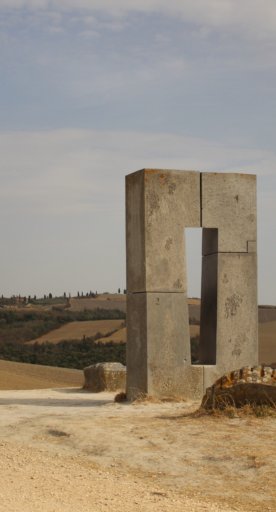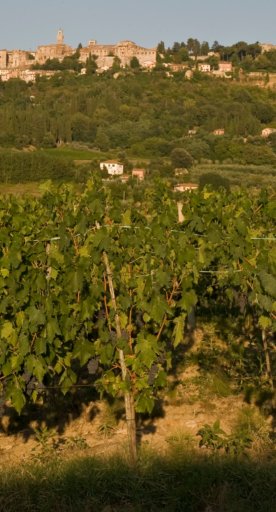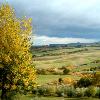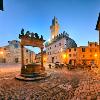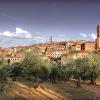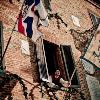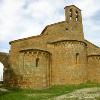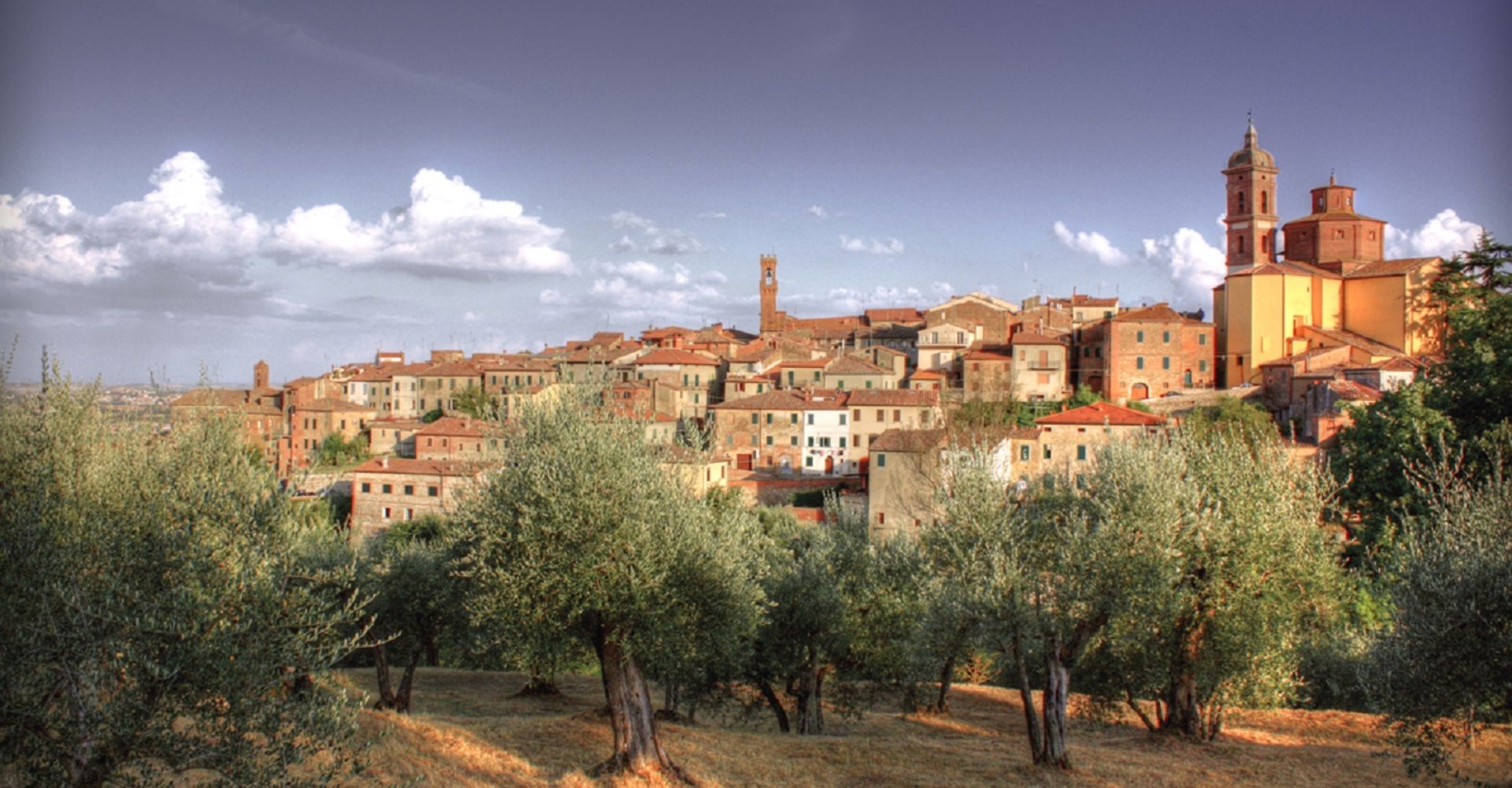
Sinalunga
Homeland of the Chianina breed, among history and magnificent landscapes
Sinalunga looks over the Valdichiana, with the lush valley between Siena and Arezzo at its feet. The historic center developed on a small plateau that has a maze of narrow streets and buildings of great artistic and cultural interest.
Among these, is Palazzo Pretorio, with its bell tower that reminds us of the Torre del Mangia in Siena and its intriguing prisons. In Pieve di Sinalunga, you'll find the Pieve di San Pietro ad Mensulas, one of the oldest churches in the area that was undoubtedly built on foundations that were much earlier than its Romanesque-basilica layout.
Important examples of rural architecture in the area are the Leopoldine houses. They were built throughout the valley in the period just following the reclamation of the Valdichiana, and commissioned by Grand Duke Leopold II of Habsburg Lorraine. The Real Fattoria di Bettolle is particularly fascinating: the historic farm belonged to the Knights of Santo Stefano, and placed at the service of the Grand Ducal to fight the enemies of the Christian faith, and therefore, to the Grand Dukes of Tuscany themselves.
The entire Valdichiana, but in particular Sinalunga and Bettolle, can be defined as the homeland of the Chianina breed of cattle, which are the largest cattle in the world, leading them to be known as the "white giants". The world-renowned bistecca alla fiorentina is made from the Chianina breed.
What to see in Sinalunga
In the central Piazza Garibaldi, you'll find the Collegiate Church of San Martino that dates back to 1588. Here you'll find the Madonna and Child and the Saints by Sodoma; the Church of the Madonna delle Nevi with the neo-Gothic style gate and the Church of Santa Croce which preserves the altar table depicting the Marriage of the Virgin, by the school of Luca Signorelli, considered one of the greatest interpreters of Renaissance painting.
Palazzo Pretorio in Piazza IV Novembre has watched over the village since the Middle Ages. Built between 1337 and 1346, on the main facade and on the eastern side it houses various coats of arms of the Podestà from the time of the Republic of Siena and those of the Medici era. In particular, on the right side of the main portal there's a pillory where criminals or alleged criminals were placed to be publically mocked.
In the historic center, you can also visit the museum space dedicated to the Etruscans: "Le Stanze di Larth". Here, there are Etruscan finds from the necropolis of San Giustino and from the nearby Etruscan Le Carceri settlement, both of which are in the municipal area.
At the entrance to the town of Sinalunga is the Fonte del Castagno: an inscription dates the monument to 1265. The nearby underground passages form the Sentiero dell'Acqua, which can be visited by booking at the municipal tourist office.
The Church of San Bernardino in Poggio Baldino, dating back to 1449, is also worth visiting. It's adjoined to a convent of the Frati Minori order, which houses the Madonna del Rifugio icon and the Cristo Benedicente, both attributed to the early Italian Renaissance painter and illuminator, Sano di Pietro. It's also home to L'Annunciazione di Benvenuto di Giovanni (1470), and the Baptism of Christ and the Coronation of the Virgin and Child between Saints Simon and Taddeo (1483) by Guiduccio Cozzarelli.
In the central Piazza Garibaldi, you'll find the Collegiate Church of San Martino that dates back to 1588. Here you'll find the Madonna and Child and the Saints by Sodoma; the Church of the Madonna delle Nevi with the neo-Gothic style gate and the Church of Santa Croce which preserves the altar table depicting the Marriage of the Virgin, by the school of Luca Signorelli, considered one of the greatest interpreters of Renaissance painting.
Palazzo Pretorio in Piazza IV Novembre has watched over the village since the Middle Ages. Built between 1337 and 1346, on the main facade and on the eastern side it houses various coats of arms of the Podestà from the time of the Republic of Siena and those of the Medici era. In particular, on the right side of the main portal there's a pillory where criminals or alleged criminals were placed to be publically mocked.
In the historic center, you can also visit the museum space dedicated to the Etruscans: "Le Stanze di Larth". Here, there are Etruscan finds from the necropolis of San Giustino and from the nearby Etruscan Le Carceri settlement, both of which are in the municipal area.
At the entrance to the town of Sinalunga is the Fonte del Castagno: an inscription dates the monument to 1265. The nearby underground passages form the Sentiero dell'Acqua, which can be visited by booking at the municipal tourist office.
The Church of San Bernardino in Poggio Baldino, dating back to 1449, is also worth visiting. It's adjoined to a convent of the Frati Minori order, which houses the Madonna del Rifugio icon and the Cristo Benedicente, both attributed to the early Italian Renaissance painter and illuminator, Sano di Pietro. It's also home to L'Annunciazione di Benvenuto di Giovanni (1470), and the Baptism of Christ and the Coronation of the Virgin and Child between Saints Simon and Taddeo (1483) by Guiduccio Cozzarelli.
The historic farms
Sinalunga is home to several farms of considerable historical interest. Among these is the Amorosa, of medieval origin (it's shown as a castle in the fresco of the "Battle of Val di Chiana" in the Palazzo Pubblico in Siena). Currently, it's an internationally renowned tourist accommodation facility. The Fattoria della Fratta dating back to 1208 houses an important Chianina breed from which the prized Florentine steak is obtained. The farm is an example of a transversal tourist offer in that it's able to offer hospitality, catering and a cultural offering, linked to the presence of a fresco by Sodoma. La Fratta was also chose as a film set by Matteo Garrone for the recent Pinocchio film with Roberto Benigni, it's also a popular wedding destination.
Finally, the Real Fattoria di Bettolle which has been incorporated into the urban fabric of Bettolle, represents the most important historical document of the reclamation of the Valdichiana. Once owned by the Grand Ducal, for a long period it belonged to the Crusader Knights of Santo Stefano, whose characteristic cross is set on the walls of some farmhouses.
Sinalunga is home to several farms of considerable historical interest. Among these is the Amorosa, of medieval origin (it's shown as a castle in the fresco of the "Battle of Val di Chiana" in the Palazzo Pubblico in Siena). Currently, it's an internationally renowned tourist accommodation facility. The Fattoria della Fratta dating back to 1208 houses an important Chianina breed from which the prized Florentine steak is obtained. The farm is an example of a transversal tourist offer in that it's able to offer hospitality, catering and a cultural offering, linked to the presence of a fresco by Sodoma. La Fratta was also chose as a film set by Matteo Garrone for the recent Pinocchio film with Roberto Benigni, it's also a popular wedding destination.
Finally, the Real Fattoria di Bettolle which has been incorporated into the urban fabric of Bettolle, represents the most important historical document of the reclamation of the Valdichiana. Once owned by the Grand Ducal, for a long period it belonged to the Crusader Knights of Santo Stefano, whose characteristic cross is set on the walls of some farmhouses.
Nearby
Sinalunga is surrounded by small treasures such as the villages of Scrofiano, Farnetella, Rigomagno, Guazzino and Bettolle which are chosen by tourists in search of breathtaking landscapes and relaxation. There's the possibility of walking, cycling or horseback riding through the dense network of paths, and then restoring yourself in the numerous high-level restaurants, farmhouses and refreshment points in the area.
A cycling route of over 300km is dedicated to the Chianina, "the White Giants". It crosses 18 Municipalities of the Sienese and Arezzo Valdichiana, and allows you to slowly savour the valley, discovering the historical and landscape beauties, the rich food and wine offering, and rural hospitality.
For outdoor sports enthusiasts, an afternoon dedicated to golf at the Valdichiana Golf Club in a rural setting with typical Tuscan beauty cannot be missed. The Golf Club has a 9-hole course and a driving range, where anyone who wants to learn to play can do so under the careful guidance and supervision of instructors.
Sinalunga is surrounded by small treasures such as the villages of Scrofiano, Farnetella, Rigomagno, Guazzino and Bettolle which are chosen by tourists in search of breathtaking landscapes and relaxation. There's the possibility of walking, cycling or horseback riding through the dense network of paths, and then restoring yourself in the numerous high-level restaurants, farmhouses and refreshment points in the area.
A cycling route of over 300km is dedicated to the Chianina, "the White Giants". It crosses 18 Municipalities of the Sienese and Arezzo Valdichiana, and allows you to slowly savour the valley, discovering the historical and landscape beauties, the rich food and wine offering, and rural hospitality.
For outdoor sports enthusiasts, an afternoon dedicated to golf at the Valdichiana Golf Club in a rural setting with typical Tuscan beauty cannot be missed. The Golf Club has a 9-hole course and a driving range, where anyone who wants to learn to play can do so under the careful guidance and supervision of instructors.
Events
The traditional Palio delle Rocche is among the many festivals that take place annually in Sinalunga, taking place in Guazzino in mid-April. There's also the Infiorata di Farnetella (9 Sundays after Easter, the Sunday of the Feast of Corpus Domini). On the occasion, the streets of the village are covered with floral paintings by skillful artists, and the historical re-enactment, the Palio della Rivalsa, takes place in Bettolle in June. The street arts festival titled L'incantaborgo brings life to the streets and squares of the historic center in Sinalunga at the end of July. The highly successsful music festival, Birranthology Festival, takes place in Scrofiano at the end of August, and there's also the Carriera di San Martino, a craft carts competition that has been held on 11 November since the 1950s in honor of San Martino Patron of Sinalunga, seeing fierce competition between the nine districts. Finally, the Fiera alla Pieve that's over 100 years old is a fair of religious origin dedicated to the Madonna del Rosario that's kept inside the Pieve di San Pietro ad Mensulas.
In early October, hundreds of pilgrims from central Italy arrived in Sinalunga to honor the Madonna. Following this, butchers got to work to give energy to the tired pilgrims. Their main dish was porchetta, which is why this product has become the symbol of the Fiera alla Pieve. From the nineteenth century, the Fiera alla Pieve changed: the livestock market took over the religious aspect, until the end of the sharecropping system further modified the fair that now involves the entire territory of the Pieve di Sinalunga, filling it with stalls of various products. In addition to spaces specifically dedicated to crafts, food and wine and floriculture, the farm livestock market is no longer present, but for ten years now the "Agricultural Fair" has been held as part of the fair, enhancing and promoting local high-quality products, such as the "Chianina".
The traditional Palio delle Rocche is among the many festivals that take place annually in Sinalunga, taking place in Guazzino in mid-April. There's also the Infiorata di Farnetella (9 Sundays after Easter, the Sunday of the Feast of Corpus Domini). On the occasion, the streets of the village are covered with floral paintings by skillful artists, and the historical re-enactment, the Palio della Rivalsa, takes place in Bettolle in June. The street arts festival titled L'incantaborgo brings life to the streets and squares of the historic center in Sinalunga at the end of July. The highly successsful music festival, Birranthology Festival, takes place in Scrofiano at the end of August, and there's also the Carriera di San Martino, a craft carts competition that has been held on 11 November since the 1950s in honor of San Martino Patron of Sinalunga, seeing fierce competition between the nine districts. Finally, the Fiera alla Pieve that's over 100 years old is a fair of religious origin dedicated to the Madonna del Rosario that's kept inside the Pieve di San Pietro ad Mensulas.
In early October, hundreds of pilgrims from central Italy arrived in Sinalunga to honor the Madonna. Following this, butchers got to work to give energy to the tired pilgrims. Their main dish was porchetta, which is why this product has become the symbol of the Fiera alla Pieve. From the nineteenth century, the Fiera alla Pieve changed: the livestock market took over the religious aspect, until the end of the sharecropping system further modified the fair that now involves the entire territory of the Pieve di Sinalunga, filling it with stalls of various products. In addition to spaces specifically dedicated to crafts, food and wine and floriculture, the farm livestock market is no longer present, but for ten years now the "Agricultural Fair" has been held as part of the fair, enhancing and promoting local high-quality products, such as the "Chianina".
Local products
The Chianina breed was selected in the early 1900s by the veterinarian and zootechnical researcher Ezio Marchi, born in Bettolle, where the Consortium for the Protection of Vitellone Bianco of the Central Apennines has its headquarters, protecting this high-quality product that has been awarded protected geographical indication (IGP) status. Today, there are a number of Chianina farms in the area that are open to visitors, with the possibility of tasting the many specialties based on this valuable product.
Thanks to the work of the historic farms, flavours that were once disappearing were saved, such as the Aglione della Valdichiana, traditionally served with the famous pici all’aglione.
The Chianina breed was selected in the early 1900s by the veterinarian and zootechnical researcher Ezio Marchi, born in Bettolle, where the Consortium for the Protection of Vitellone Bianco of the Central Apennines has its headquarters, protecting this high-quality product that has been awarded protected geographical indication (IGP) status. Today, there are a number of Chianina farms in the area that are open to visitors, with the possibility of tasting the many specialties based on this valuable product.
Thanks to the work of the historic farms, flavours that were once disappearing were saved, such as the Aglione della Valdichiana, traditionally served with the famous pici all’aglione.
What’s nearby?
Valdichiana Senese


